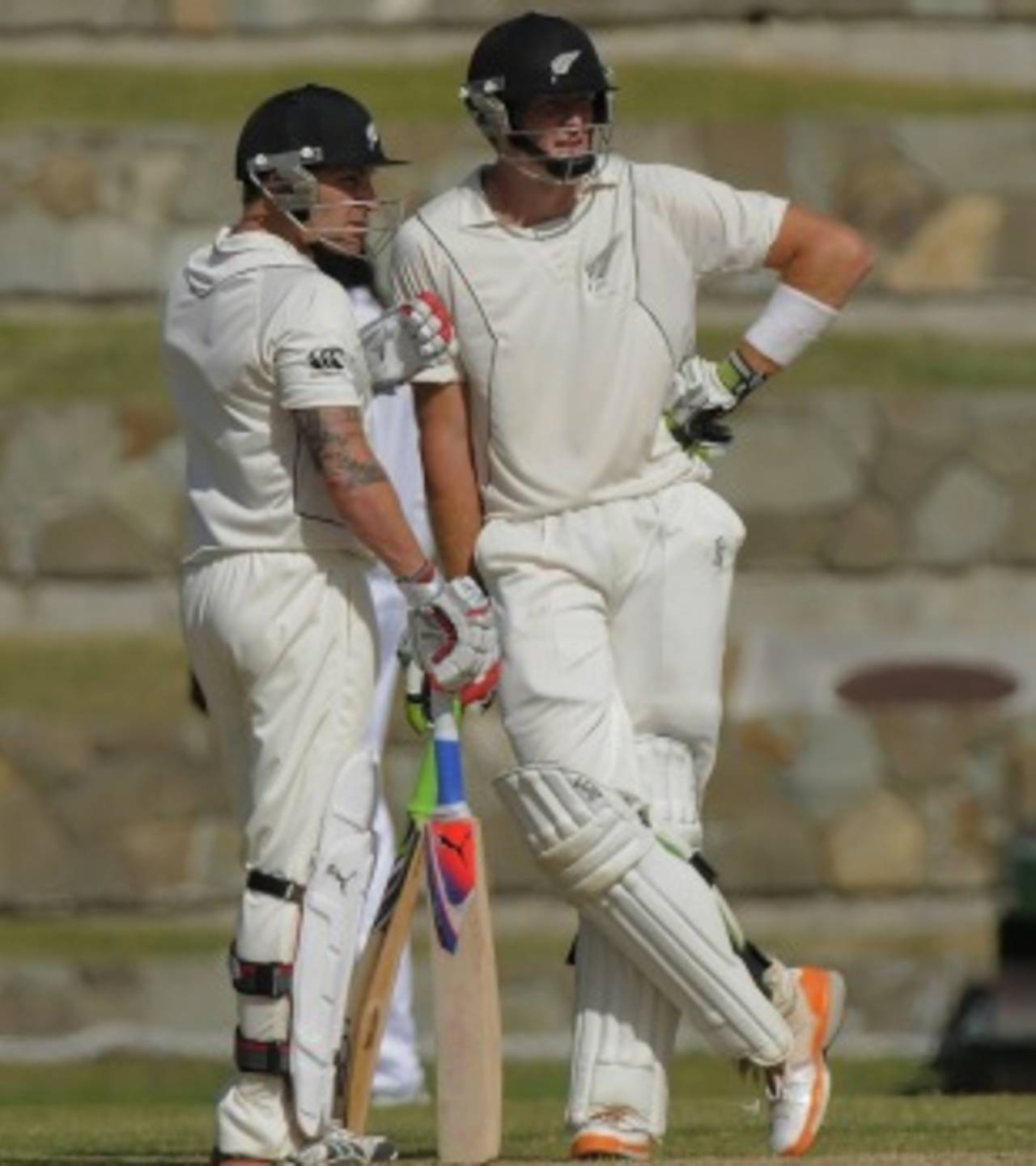At the start of the fourth day, West Indies were favourites. They were 91 ahead and had four wickets in hand. The luxury of a substantial lead and an opportunity to push for victory have been rare under the leadership of Darren Sammy, and he was intent on making it count, hitting the first ball powerfully to the boundary. By the end of play, however, the chances of a West Indian victory had reduced, and Sammy was left bemoaning how benign the pitch at the Sir Vivian Richards Stadium had become.
New Zealand wiped out their deficit of 171 for the loss of only two wickets and were effectively 28 for 3 at stumps. There wasn't much assistance for either the West Indian quicks or the spinners. Not even for Sunil Narine, who had taken five wickets in the first innings. The occasional delivery kept low or bounced more than usual, but a session of sensible batting from New Zealand on the final morning will consign this Test to a draw.
"Daniel [Vettori] bowled over 50 overs and he only got one wicket," Sammy said after the fourth day. "Sunil has bowled 60 or so overs in the match for his seven wickets. You have to put in hard work to get rewards [on this pitch]."
The West Indian fast bowlers were able to swing the ball - both new and old - in the first innings and also used the bounce on offer to set up the batsmen. The pitched had eased out now, though, and in the absence of swing or bounce the likes of Ravi Rampaul and Kemar Roach have only one real option left - reverse swing. "The pitch wasn't really assisting. Kemar was getting some reverse," Sammy said without sounding too hopeful. "We'll see tomorrow how it goes."
Perhaps the best evidence of how the pitch has eased out was the rate at which New Zealand scored in their second innings. They were able to erase the deficit of 171 in less than 50 overs. For a team that was trailing by nearly 50% of their first-innings score, New Zealand didn't have too much trouble, even against Narine, whom they had struggled to read. Martin Guptill, who made another attractive 50, said there were only a few deliveries that kicked up while he was batting. One of those accounted for him.
Every pitch needn't have seam and bounce, or raging turn. Not every Test has to have run rates of more than four an over. Attrition has its own charm. However, a pitch that doesn't aid bowlers even on days four and five makes it very hard for a team to get 20 wickets. There is beauty in how a surface contributes to the building up of a climax.
It is improbable that New Zealand will score quickly on the final morning to set a target for West Indies. Run rates so far have hovered around three an over, and once the ball gets older and softer, the batsmen have found it difficult to play forceful shots. A New Zealand stumble is the likeliest way of avoiding a draw but they were resourceful enough to survive an onslaught from South Africa in Wellington earlier this year.
West Indies have not had a first-innings lead of more than 150 since
the Multan Test in November 2006. On that occasion, Mohammad Yousuf scored 191 in Pakistan's second innings to secure a draw. Sammy and his men will hope they don't face similar resistance in the first two hours on Sunday.
